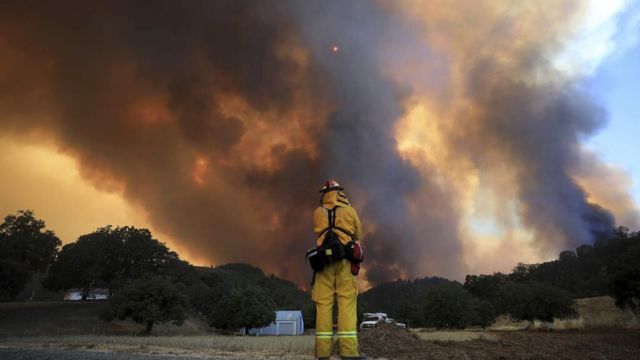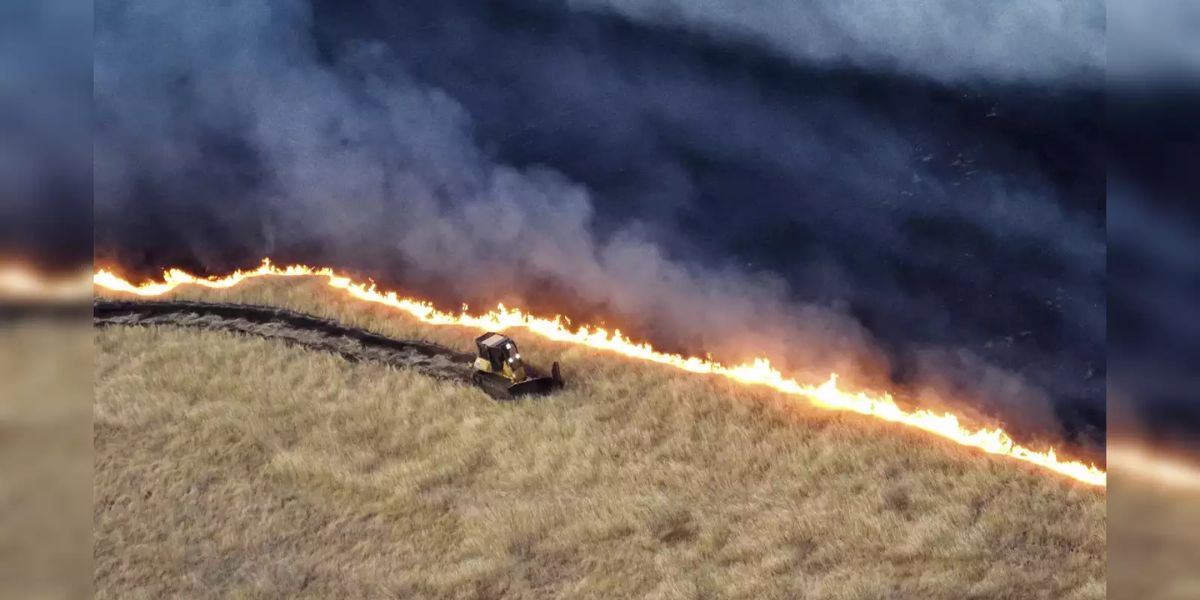WFCN –
At first glance, wildfires pose a clear danger, yet the smoke they produce kills many more people than the flames themselves.
A public health emergency is unfolding due to the smoke from the more common fires.
Our new research, which appears in the journal Science Advances, estimates that between 2008 and 2018, wildfire smoke was responsible for over 52,000 preventable deaths in California, costing the state over $430 billion.
While several studies have looked at the immediate dangers of breathing in smoke from wildfires, very few have looked at the cumulative effect of years of exposure and how it can reduce human life expectancy.
Climate change and human settlements on the periphery of wilderness areas have both increased the likelihood of wildfires and made them more destructive. Because tiny flames haven’t been able to clear out the undergrowth due to years of putting out all wildfires, larger fires that do manage to escape have more fuel to burn.
Communities must be aware that the health risk associated with smoke pollution is on the rise due to the increasing frequency of fires in our daily life.
Potential dangers to people’s health
Decades of studies on air pollution have demonstrated the long-term health risks associated with PM2.5 exposure.

PM2.5 consists of a variety of very tiny particles, with each one being just a few hundredths of an inch wide. Some of its many origins include fires and industrial pollutants, but it also comes from vehicles’ tailpipes and other sources. Due to their microscopic size, the particles have the potential to penetrate the lungs and even the circulatory system.
Inhaling PM2.5 can lead to temporary respiratory issues in susceptible populations, including those with asthma and the elderly. It causes harm in the long run because it plays a role in the development of chronic diseases such diabetes, asthma, atherosclerosis, and reduced lung function. The inflammatory reaction of the body to air pollution is one cause of this.
SEE MORE –
Death Toll Rises: 28 Dead from Extreme Heat Across US, Mainly in California
Fire smoke was the leading cause of death in Northern California and the Central Valley, according to this map.
There is a cocktail of substances in the smoke from wildfires. There is mounting evidence that PM2.5 from wildfires may have distinct physical and chemical elements that enhance toxicity.
For instance, compared to PM2.5 from other sources like vehicles and factories, smoke from wildfires significantly increased pulmonary inflammation in rats, according to research out of the University of California, Davis. This makes the pollutant more dangerous to human respiratory health than the usual PM2.5 that people in cities are exposed to.
Wildfire smoke: a major issue
We looked at the potential health risks of breathing in smoke from wildfires over the long run. Based on data collected over a decade, it appears that wildfire smoke is responsible for approximately 10,000 deaths per year in California during years with high fire activity, such as 2017 and 2018. When put in context, consider that automobile accidents claim the lives of about four thousand Californians annually.
Smoke can travel hundreds or even thousands of kilometers, even though the majority of fires occur in rural, wooded regions. Thus, the health repercussions permeate densely populated areas.
As an example, in 2015, the Rough Fire in Fresno County, California, burnt almost 150,000 acres of primarily rural land. However, the majority of fatalities that year occurred in the San Joaquin Valley and in a more densely populated area to the west of the fire. Smoke from wildfires may have prematurely killed 12,000 Californians in 2018, the same year that Paradise and other towns burnt.
SEE MORE –
We used annual estimates of PM2.5 from wildfire smoke broken down by ZIP code, which is based on wildfire activity, to carry out this analysis. We focused on PM2.5 exposure from wildfires, which is different from most previous studies. We were able to take into consideration the possibility of smoke’s enhanced toxicity because of this.
We next estimated the association between wildfire-specific air pollution and early mortality using a dose-response model. From epidemiological research that link air pollution levels to survival, dose-response estimates are derived. Because wildfire smoke may be more harmful than previously thought, we modified an existing dose-response estimate for this research.
Ways to remain secure
By reducing the frequency and intensity of wildfires and smoke exposure, these findings indicate that society should prioritize investments in coordinated forest management, wildland-urban interface management, and climate change mitigation.
These efforts could have a substantial positive impact on public health. We must also allocate additional funds to address the intensified smoking problem by creating designated safe spaces in public buildings, such as schools.
If you live in an area where wildfire smoke is being carried by the wind, here are some ways to reduce your exposure:
On days when there is a lot of smoke outside, it is best to remain within and close the windows. If you happen to possess an air purifier, activate it. Invest in a HEPA-filtered one if you don’t already have one. Certified air filters can be found on the website of the California Air Resources Board. Checking a resource like the AirNow Fire and Smoke Map or the PurpleAir map can help you determine if it’s safe to be outdoors if you detect smoke or know that a fire is nearby—even if you can’t see it.
In the event that you must go outdoors, it is imperative that you do so while wearing a protective mask, preferably a N95. Use a surgical mask instead of a N95 if you can’t get your hands on one.
Stay indoors if it’s going to be a smokey day: More air, and PM2.5 with it, enters the lungs during vigorous activity like exercise. The cardiovascular and pulmonary systems also have to work harder when you exercise. Make sure you’re exercising indoors, preferably in a room with air filtration.
Be up-to-date: You may stay updated on local, state, and federal air quality reports by following the relevant agencies on social media and visiting their websites. When alerts are available, you can also sign up for them.The Discussion
Michael Jerrett, Professor of Environmental Health Sciences at the University of California, Los Angeles, and Rachel Connolly, Director of Research at the same institution
A Creative Commons license allows for the republishing of this article from The Conversation. Take a look at the primary source.
